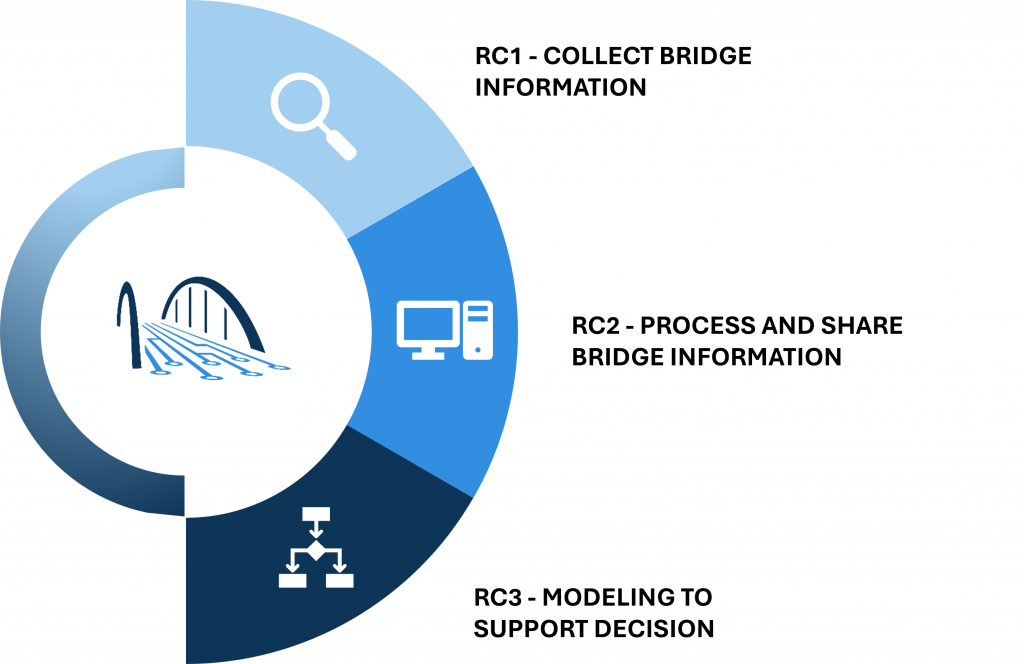BRIDGITISE intends to take benefit from the rapidly growing possibilities offered by new digital technologies to boost the efficiency of the bridge industry.
The overarching research objective is leveraging digital technologies to develop and validate innovative technologies for the cost-effective and sustainable integrity management of bridges.
This research goal presents several technological and economical challenges that must be faced across the value chains of information management and bridge integrity management.
BRIDGITISE’s
overarching research objective is pursued through three Research Clusters (RC) , each playing a pivotal role in the development and validation of cutting-edge technologies aimed at cost-effective and sustainable integrity management of bridges.

RC1
Collect Bridge Information. Innovative devices and technologies will be examined for information collection, such as crowdsensing with smartphones to collect information at a large scale and low cost, InSAR to collect information at a large scale with high precision; vision-based monitoring to increase the accuracy and reliability of weight in motion systems, unmanned vehicles with flight path optimized in real-time based on the collected information; low-cost sensors with edge computing capacity to optimize the volume of information to transmit; and computer vision and domain adaptation to automatize visual inspections of internal bridge areas.
RC2
Process and share bridge information. Advanced technologies to process and share information will be developed. These include BIM integrated within bridge management systems platforms; SHM-informed probabilistic digital twins to support BrIM across lifecycle; cloud platforms to integrate SHM with cybersecurity protocols for the secure storage and sharing of SHM information; neural networks-physic-based hybrid models of deterioration for the prognosis of the bridge performance; and computer vision to automatize the processing of visual inspection information.
RC3
Modeling to support decision. This RC deals with decision problems involved in lifecycle BrIM, such as the development of indicators to maximize the circularity of existing bridges management and the implementation of a framework to estimate the value of digital information. Moreover, the need to update design codes towards a more economical and sustainable design is also considered. Finally, a digital platform enriched with decision analysis modules to optimize bridge lifecycle management will be carried out.